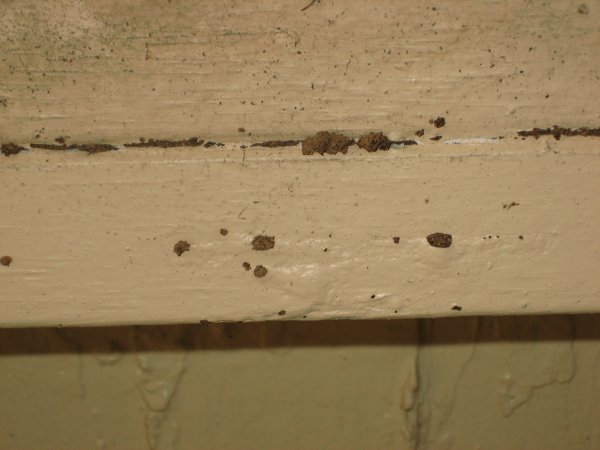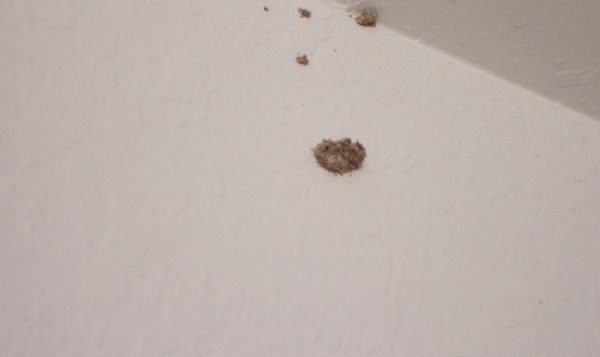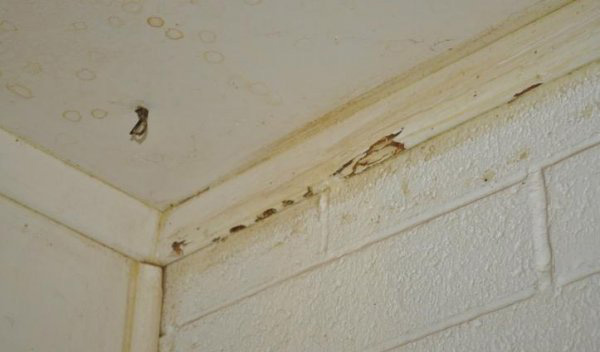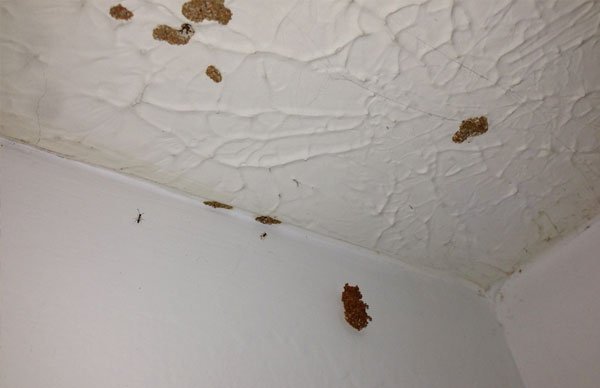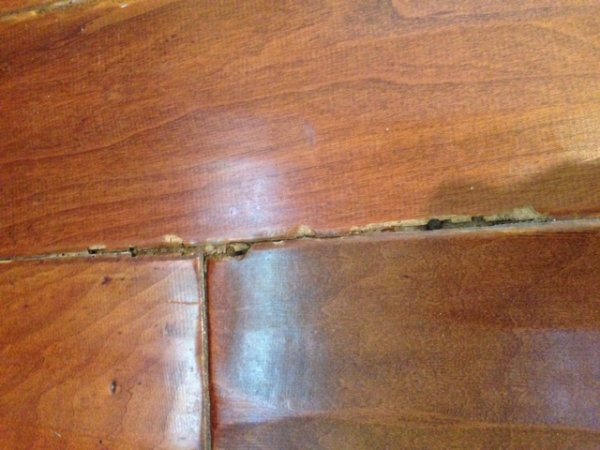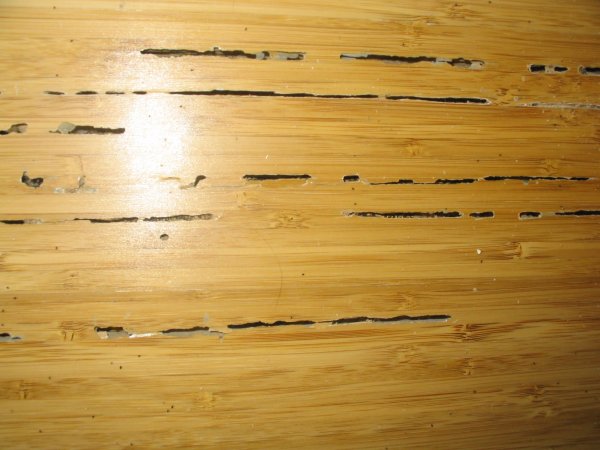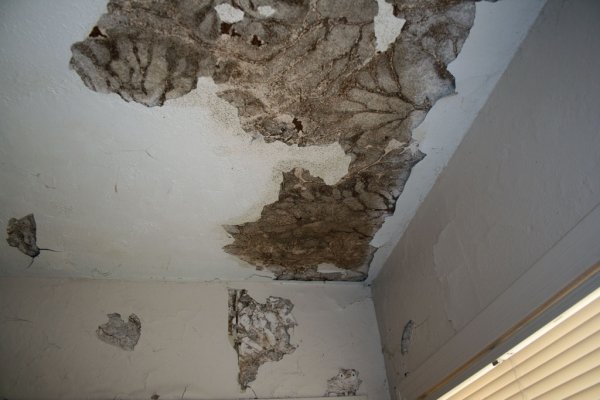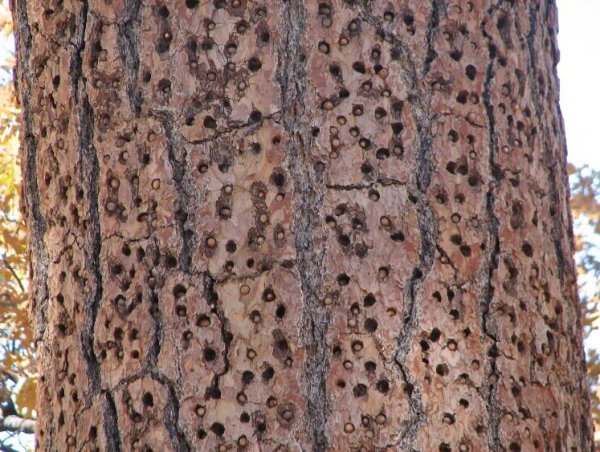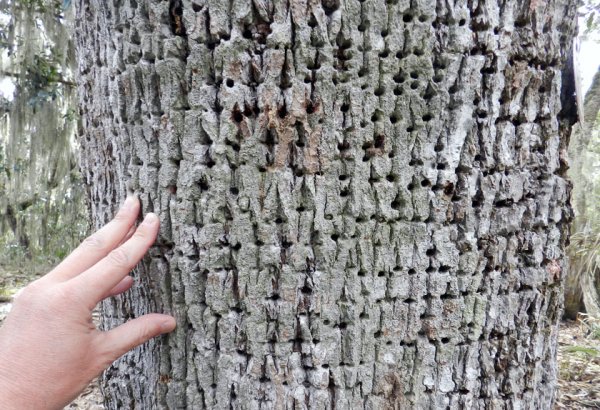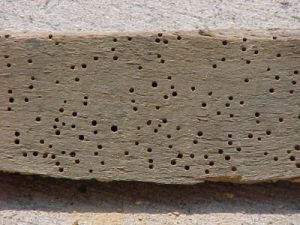
Termites are really harmful creatures. As far as the wood is their main food, termites can destroy all wooden things in your house.
That doesn’t sound good. Of course, it is better to know the signs of termite infestation to be ready to prevent it in time.
Termites are really smart, their societies are real kingdoms with a number of casts and social roles. For example, only worker termites destroy wood because they are responsible for feeding the whole colony.
Hide content
- About termite holes
- How to distinguish termite exit holes?
- Wall damage
- Termite holes in ceiling
- Floor infestation
- Drywall damage
- Termite holes in trees
- Useful articles
- Helpful video
- Conclusion
About termite holes
What do termite holes look like? Termites are great explores. They can travel long distances for food. While termites are traveling through wood or other materials, that can be found in your house, they may leave small holes to the outside world.
These holes are very quickly filled with soil particles or some other materials that termites have prepared beforehand.
As far as holes do not serve termites any more for food gathering, they fill them with soil.
Such action helps to control humidity and temperatures in their working space.
And if termites want to work on the surface of the chosen material and created holes in it, they start building mud tunnels this very moment.
Mud tunnels help to protect exploring termites.
You would be interested how termite holes look like to distinguish them. Well, termite holes in wood or other building materials look like small markings. Termites usually make them before mailing season starts.
Quite often such holes can be used as escape routes while flying termites leave their nest. When flying termites escape from their nests, the nymphs cover this hole again with the help of brown substance, consisting of soil, feces and parts of wood.
How to distinguish termite exit holes?
Other insects, such as carpenter bees and beetles, also make exit holes in wood, but they look differently. These insects don’t usually cover up their exit holes. The hole size and cover materials are also important.
Acrobat ants and carpenter ants usually leave larger holes. They recover the holes with the help of frass, a powdery substance which looks like sawdust.
Termites leave round holes, the size is one-eighth inch or even smaller, they exit holes are filled with a brown, plaster-like substance.The high time to find the termite exit holes is spring and summer. During these seasons, when it is warm enough, termites usually leave their nest.
In the warmer places, for example Florida, that happens earlier and can repeat later during the year.
Of course, you can be really careful and check your house for termite holes regularly.
But they are really small and too difficult to find.
Big pest management companies can offer you special programs, saving money and time, and helping you to avoid or quickly get rid of annoying insects. The right picture shows the example of termite holes in sheetrock.
Wall damage
If you notice cavities and holes in your walls, it means that termites live in your house.
Walls are easy to be damaged, because the insects can access them from the ground and the wall surface is considerable.
There are millions of different termite species, and their behavior can differ. For example, mites live in soil. They access food sources with the help of tunnels.
Workers are responsible for constructions of such tunnels of mud, saliva and feces. As far as items live in soil, they can be attracted with the walls.It is quite difficult to notice wall damage, that’s why people start seeing it after a long period of time. The big surface area of walls can be a great food source for termites, because lots of insects live there.
If your house is infested by termites the walls damage can be the most serious. The walls are rather thin structures, the infestation spreads very quick. If the walls are made of cheap materials such as laminated plywood or particle board, they can be damaged really quickly.
But you can save your walls, preventing termite infestation. You should choose proper quality materials for the walls, inviting pest control professionals for home pretreating and also regular inspection. If you follow all these instructions, there are no reasons to worry.
Learn more about drywood termites: signs of their activity; best methods of treatment: spot treatment and DIY methods; how to get rid of them in furniture?
What do termite holes in the ground look like? They look almost the same as termite holes in wall, so you will recognize them easily.
Termite holes in ceiling
If you suspect termites in invading your house, you should know that they consume cellulose and organic materials in different forms. Termites may infest furniture, books, picture frames, window trims, floors and ceilings.
Usually ceiling damaged by termites looks like it is slightly damaged by water. Such ceilings buckle and sag.Repairing of an affected ceiling can be different depending on the ceiling materials and infestation level. But unfortunately, the termite damage in the ceiling can be noticed only when it is serious enough and needs expensive replacement.
Learn more about subterranean termites: signs of their activity; best methods of treatment and DIY methods. Eastern subterranean termites and their tunnels and tubes with photo.
Floor infestation
Termites can also leave their exit holes in your floors and even damage the floor seriously. The damage size may depend on floor material, the termites prefer softer ones.
Advice! You should start repairing the floor only after it is all done with the termites.Here are the most significant signs of termite floor damage.
- Floor tiles become loose if termites damage joists (floor supports), the floor may start sagging.
- If you have hardwood floors, the infestation can’t be seen even for some years. But afterwards floors be one weaker.
- Termites may eat the backing of the laminate floors. So laminate starts to sag and blister. If you have a look carefully you can see hollow tunnels under the buckled areas.
- One more sign of floor infestation is a hollow sound. Termites consume wood in the floor and create different forms such as baseboards, cavities and so on. Pest control inspectors often tap no the wood to check the presence of infestation.
Drywall damage
Quite often the walls and ceilings in the house can be made of drywall, or sheetrock. This material partially consists of cellulose and is great food for termites.
Usually termites start consuming walls and other home elements from inside out, so you can scarcely find any dang signs.Quite often termites leave small, pin-sized holes in drywall paper. Some termites fill these holes with soil, others don’t.
There are some cases when you are not able to see the signs of infestation, but the specialists can find it out, for example, checking the soundness of walls and noticing termite droppings.
The specialists sometimes rely on temperatures as well. Temperature changes can show the areas with high moisture or the areas where termites are supposed to be. On the pictures below you can see the examples of termite holes in drywall.
Here you can learn more information about effective treatment method called tenting (fumigation): dangers for termites, preparing for fumigation and cleaning after, how long does this procedure last?
Termite holes in trees
Termite colonies can be dreadful not only for your house but for the yard as well. Termites may infest trees and it is really dangerously. Termites attack only dead wood, but they consume the wood inside such tree, and it can fall down.
As far as termites create tunnels to travel between their nest and sources of food, they can be notices in tree crevices. These mud tubes are not big at all, about the pencil diameter, they have rusty brown color. Such tubes are quite easy to be noticed on the tree bark.
You can also check the tree for termite holes. The best place for your experiment is around the tree’s base. Take a small shovel and dig with it around the roots, the best place for termites is below the soil line.
It you notice yard infestation, it means that the termites are most probably invading your home now.
Useful articles
If you interested in more information of termites we recommend you to read the following articles:
- All types of termites. Are they harmful to humans? Can they bite you? And what is the difference between drywood and subterranean ones?
- What does swarmers of different species look like: drywood, subterranean, formosan?
- Signs of infestation outside and in the house: in walls or furniture.
- What is droppings and is it toxic to humans? Do termites make noises?
- Posible termite damage, how does it look like? Examples of damage in walls and wood floors.
- All about flying termites: how do they look like, swarming season and what to do if there are swarmers in your house?
- How do they do nests and mounds? How to find it in your garden or inside the house?
- Termite life cycle – from egg to larvae. And social hierarchy: workers, soldiers, queen.
Helpful video
Termite exit holes in interior wall:
Conclusion
So, you should be really careful with organized and smart termites. Termite exit holes in drywall is one of the clear signs that your home is infested.
You need to find out the holes that termites use to get in and out of wood. After you do that, you can eliminate the colony with special non-toxic chemicals.
Though the termite holes are small, you can notice them, exploring the area carefully.
It is more difficult to get from what part of the house you should start the investigation. Small sawdust piles can help you in that. They show that the wood in this area was consumed not long ago. And we hope that you will successfully cope with termites in the house.
